Plan Your Restaurant Layout for a Great Guest Experience
Your restaurant floor plan does more than show tables and walls. It sets the stage for your guests’ experience and your team’s workflow. Here’s how to plan a layout that looks great and works smoothly.

A restaurant layout is a useful map of the potential space - showing the walls, windows and doors, appliances, furniture, and accessories.
The floor plan can be 2D to indicate the general layout or 3D to show the planned materials and colors.
Whether you are dreaming of your first restaurant or want to refresh an existing business, a floor plan is an excellent idea to help you narrow down your layout and design ideas.
Ideally, your result will be a place that is welcoming and pleasing for your customers, efficient for your employees, and profitable for you.
💡Codes and Regulations
It’s important to note that many cities require you to submit a floor plan as part of the business permit process. Thus, while you can create a floor plan yourself to brainstorm and narrow down ideas, consider hiring a professional that knows the ins and outs of local building codes and regulations to fine-tune and advise you on the final design.
Standard Restaurant Sections or Zones
Let’s walk through the most common areas of a restaurant floor plan. First up: the “front of house” zones, which are the ones that the customer interacts with. Then we’ll look at the “back of house” areas.
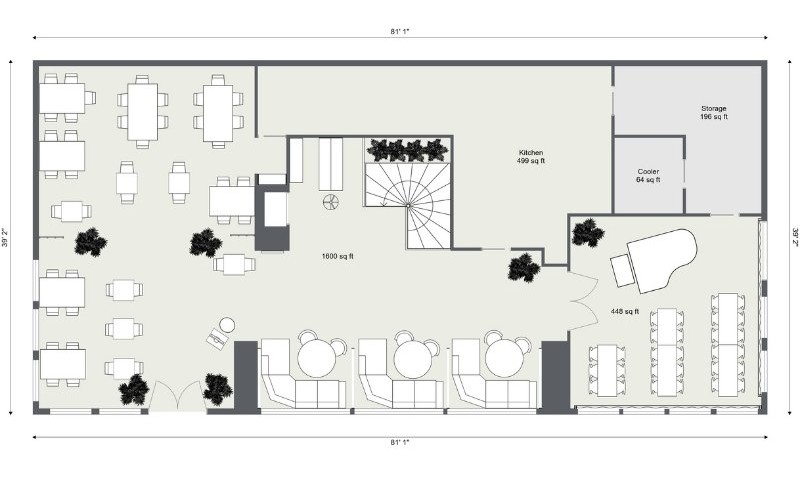
Typical "front of house" sections
Entrance and waiting area
The location where customers enter your restaurant and, if needed, wait for seating. This area may include a host or hostess stand.
Dining area
The dining area includes both inside seating and possibly outside patio dining.
You’ll generally want to provide tables for a wide variety of groups, from couples to families to large gatherings.
Square and rectangular tables are a good choice for flexibility - you can separate or group them as needed.
Other dining table types to consider include round tables, booths, and taller bar height tables.
Bars or service counters
Many restaurants include a bar area, where patrons can purchase food and drinks to eat at a counter or bar tables.
You may also provide a service counter where customers can order and pick up food to go.
Payment or POS stations
Depending on your ordering and payment systems, you may have stations throughout the restaurant where servers can input orders or print receipts.
Restrooms
Most restaurants include several bathrooms for customers and employees.
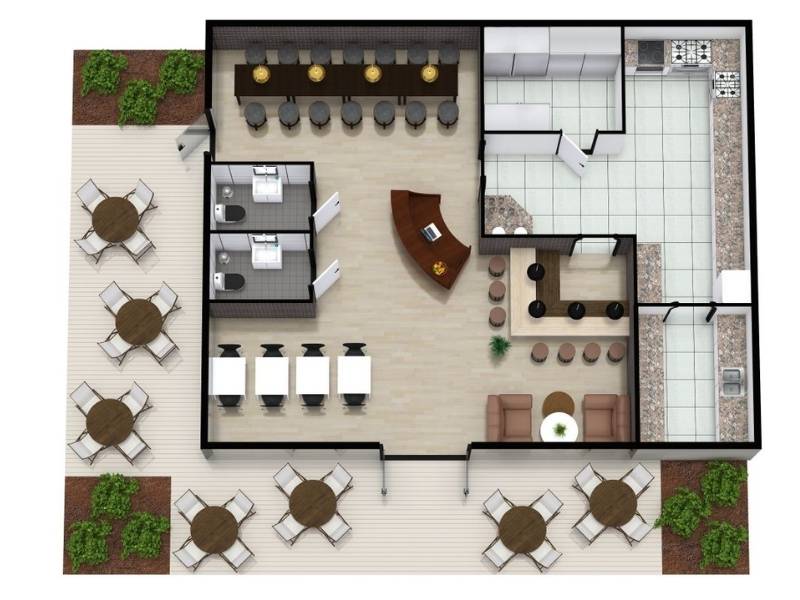
Typical "back of house" sections
Kitchen and Prep
Where the food is prepared, cooked, and plated.
Refrigeration and storage
Most restaurants will include refrigerators, freezers, and storage areas for food and cooking supplies.
Dishwashing and garbage
Cooking supplies, plates, utensils, and cups all need to be washed and dried.
You’ll also likely need trash storage inside the kitchen area and a larger bin behind the restaurant.
Offices and break rooms
In larger restaurants, you may include one or more offices or work areas for management and possibly a break area for staff.
Restaurant Layout Tips
As you review sample floor plans and start drafting up your custom layout, there are a few tips to keep in mind.
- Many restaurants try to allocate about two-thirds of the available space to the “front of house” sections, such as dining and restrooms. The other third goes to the back of house areas, such as the kitchen and storage.
- The type of restaurant can affect the spacing around the dining tables. For example, many fine dining establishments will offer more space between tables than casual or family-style restaurants.
- To make sure that diners can push their chair back, allow approximately 18 inches (about 46 cm) between the back of the chair and a wall or other chair.
- Be mindful of the circulation routes through your restaurant floor plan. Think about common workflows and making them as efficient as possible. For example, you want hot food to get to your customers as quickly as possible - so make sure that your servers can easily navigate from the tables to the kitchen and back. In the kitchen, you want to make it as efficient as possible for staff to access food and cooking supplies.
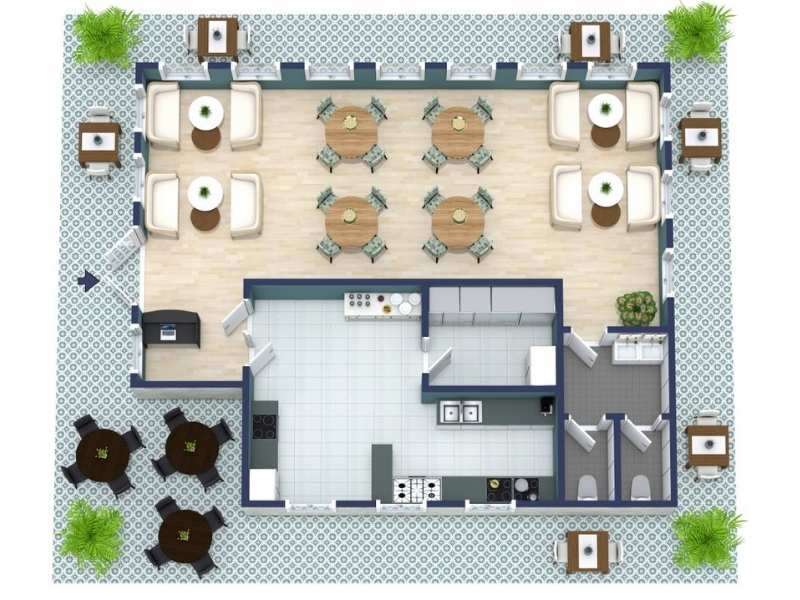
Design for Accessibility
Make sure you think about accessibility as you layout your restaurant floor plan.
This includes ensuring an entrance for someone in a wheelchair, wide aisles, accessible tables and bar areas, adequate bathroom access, an accessible kitchen set up for your staff, and more.
The requirements are described in detail in the Americans with Disabilities Act (ADA), which ensures that all employees and customers in a restaurant benefit from the same level of accessibility. However, whether or not your city has accessibility rules and regulations, accessible features can help everyone.

Building Codes
You’ll likely be required to submit a floor plan as part of your local city’s restaurant permit process.
So it’s essential to research the health, building, and sanitation codes related to your design or work with someone experienced in this area.
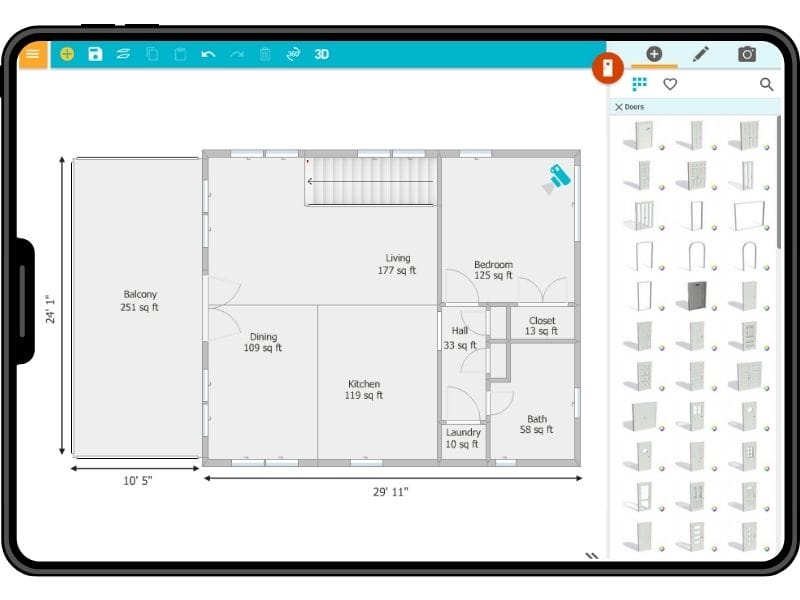
Create Your Restaurant Floor Plan
Design your restaurant layout exactly the way you want it. With RoomSketcher, you can:
- Draw professional floor plans in minutes
- Experiment with different seating and bar layouts
- Visualize your ideas in stunning 3D
- Add kitchens, restrooms, and storage areas with ease
- Share your design with contractors or investors
Related Articles
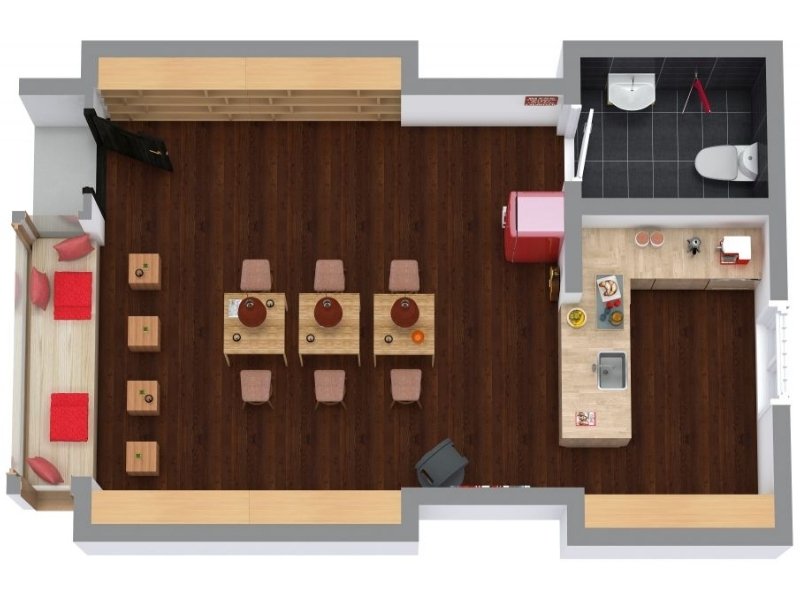
How to Plan a Coffee Shop Layout
The layout of a coffee shop can make or break the customer experience. A well-planned floor plan makes it easy for guests to order, find a seat, and enjoy their coffee in comfort, while also helping your staff work efficiently.

Commercial Space Floor Plans: Office, Retail, and Restaurant Layouts
Welcome to a world where business success begins with a well-designed floor plan. In the realm of commercial spaces, whether you're an office manager aiming to boost productivity, a retail store owner seeking to entice customers, or a restaurant operator striving to create a memorable dining experience, the layout of your space holds the key.

9 Best Commercial Floor Plan Software Tools
The best way to attract interest, test out different layouts, and communicate design intent is with floor plan software. But which one should you choose? We've made a list of the best options for you.
